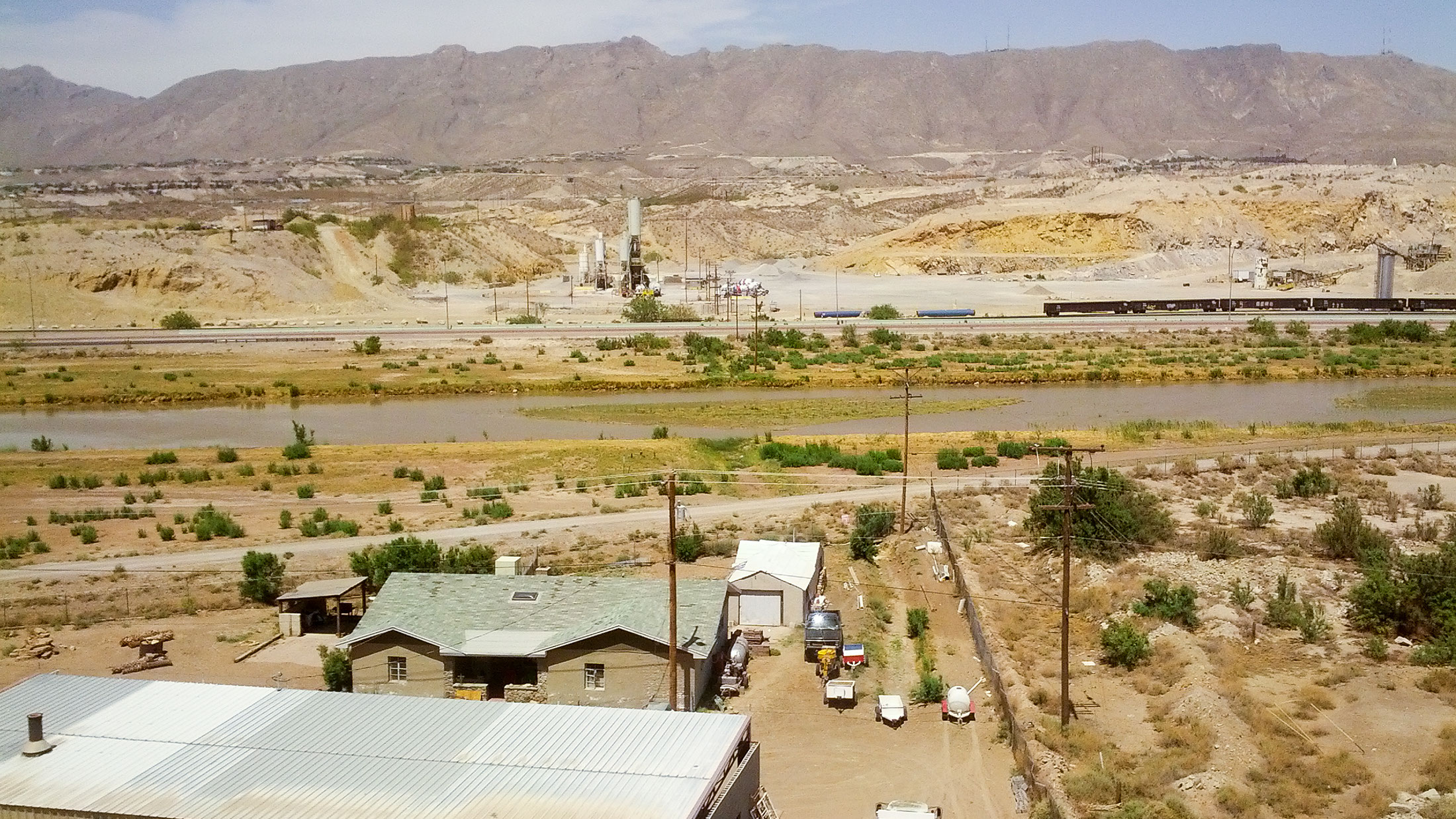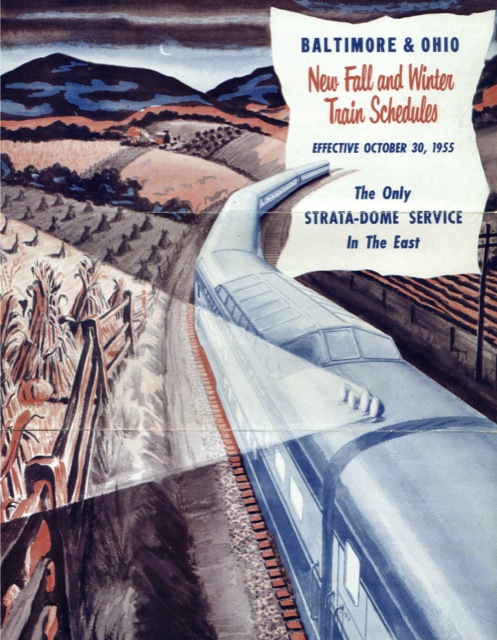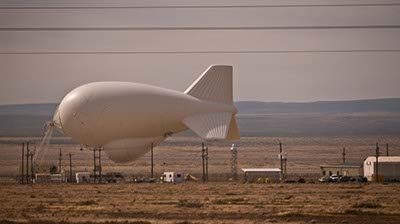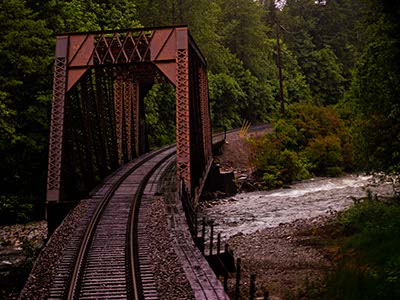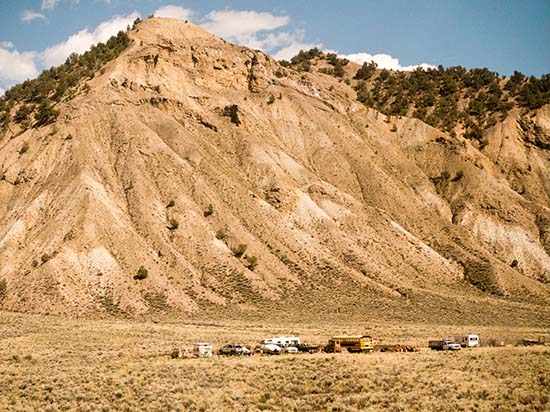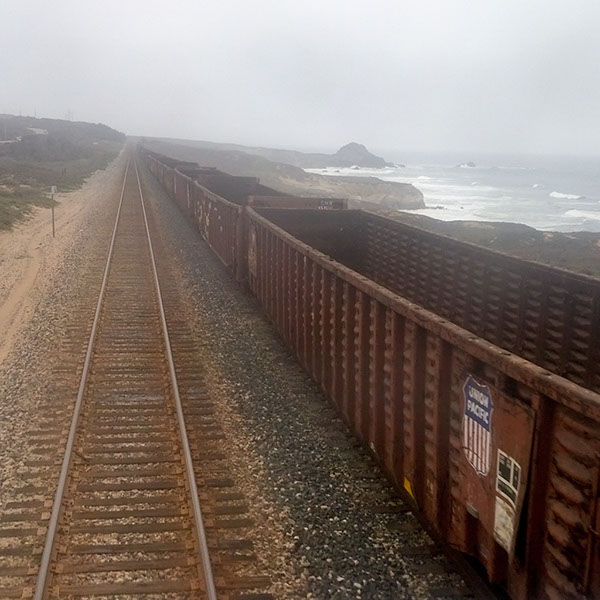Tips, Tricks & Destinations: An Amtrak Travel Guide ///
No warranties!!!! — last updated September 2014
If you find a mistake, please email me, spnzrr@gmail.com, and I’ll update.
the Amtrak Experience
Amtrak is half method of transportation and half living breathing anthropological amusement Americana. Though sometimes frustrating, it is safe, statistically safer than driving. On-board experience will vary. In my experience, Amtrak is beautiful just like the humans who ride it.
Seats, Toilets, WiFi & Beyond!
To overgeneralize, there are three types of Amtrak trains, the ‘corridor’ short-distance trains mostly originating out of Chicago and New York, the long-distance ‘Viewliner’ trains originating from New York, and the double story ‘Superliner’ trains. The Superliners serve all long-distance routes, except those that go to or from New York City (the tunnel is too short). The Superliners give better views and have more space, including usually an observatory / lounge car and usually a full-service dinning car (sometimes they’re combinded). The meal service, consist and design of all Amtrak’s trains is generally all but uniform and where it varies it’s by need and not by route.
There are a few special trains. Acela, between Washington and Boston, is Amtrak’s highest speed train, averaging 70mph and reaching speeds of 150mph. Compared to the cheaper Northeast Corridor trains, Acela is a little faster, somewhat nicer and a lot more elitist. California has its own semi-special, more commuter friendly trainsets, and there’s also the Pacific Northwests’ very modern Cascades. Lastly, there’s the AutoTrain which carries passengers and autos between Virginia and north Florida. If you’re looking to travel, work or live on American trains outside of Amtrak, I’d recommend New Jersey Transit or San Fransisco’s CalTrain, both of which have long service hours and good places to work.
As Amtrak operates many trains, on board experience does vary. The Northeast Corridor and other services targeting business and commuters have a very different vibe than three-day cross-country trains. On that note: Choose a long-distance train over a local train (eg Lake Shore Limited over Empire Service or Crescent over Carolinian), as long-distance trains have more leg room and other amenities at the same price.
On long-distance trains, coach seats are comparable to an airliner’s business class, quite wide, with much leg room, foot rests and leg rests. Almost all coach seats have electric outlets and ample storage. Sometimes, especially on long-distance routes, the coach attendant will seat you, but, if you can, seat yourself away from drafty doors and away from drafty brightly lit stairwells, for example at 1/4 or 3/4 down the length of the car. The quietest place on the train (and there’s a good view!!) is at its tail end.
Getting a good night’s sleep in coach is not easy. Though the seats are fairly roomy, they’re not lie-flat and you’re in a room with 40 others. Many trains, especially the double story superliners, do have much unused space in-which one can make a bed. As is their rightful prerogative, some conductors will ask that you remain in your seat but usually they let people do as they want. Likewise, usually the cafe / lounge car attendant will let folk sleep atop the sofa things. Ultimately, it’s a game of acclimatization.
Premium / first-class tickets include meals, soft beverages, and a free newspaper. For short distances, there isn’t much difference between premium and coach. On long-distance trains, you’re put onto a sleeper car. Though I haven’t experienced Amtrak’s sleepers, (too flamboyantly fat cat for me!) I hear they are nice enough, tight but functional and private. Seats fold into beds and each sleeper car has a shower. Amtrak has official photos here.
WiFi is available on most corridor trains emanating from Chicago, New York, and along the Pacific. It’s a bit temperamental and slow though free. Amtrak posts up to date information here.
The toilets are much like airplane bathrooms, but roomier and often with an 80s vibe. They are usually clean-ish.
All long-distance trains have either a cafe / lounge car, a dining car, or both. The dining car is — surprise! — like a diner, with a waiter and surprisingly decent food. Meals cost $12 – $25. Sometimes reservations are required; aboard most trains the dining car attendant will frequently use the train-wide intercom to squawk all that’s (im)pertinent. You’re often seated with strangers, which should be fun. The lounge car is one of my favorite places in the world. People go to the lounge car to hang out, and thus you’re treated to a veritable smorgasbord of the American experience. It’s a great place to meet people, eavesdrop and/or get work done. Lounge car food is mediocre and expensive — click here for more on eating aboard Amtrak.

The train takes a break to get watered.
Breaks / Blood-flow. Unlike an airplane, it’s common to walk around a train. Additionally, depending on the route’s schedule, long-distance trains stop every some hours to refuel and also sometimes for smoke breaks. During most fuel and smoke break passengers are allowed to walk around the platform. This is nice, unless you’re using Amtrak as a method of transportation and the train is running six hours late. On some schedules, trains stop for a few hours, sometimes to allow for connections or, as the trains are frequently late, to create padding to ensure an “on-time” arrival. Speaking of which:
Amtrak Reliability
Amtrak is not reliable. You can find the trains’ on-time history here. Notice, Amtrak isn’t reporting how late the trains arrive. It happens that long-distance trains arrive five, seven, or even more hours late.
In the Northeast and along the shorter corridor routes, Amtrak is as reliable as the airlines, which is to say frustratingly inconsistent.
If you have a guaranteed connection, Amtrak will provide you a way to make that connection. It may be a bus-stitution, holding the other train, a flight, or an overnight stay in a hotel.
If a train is more than 2 hours late, Amtrak may give you an Amtrak travel voucher (Call 1-800-USA-RAIL and be nice). If the train is more than 4 hours late, you will sometimes receive sometimes complimentary coffee and often a complimentary snack pack, which includes an above average cheese spread, two decent crackers, a below average dried fruit pouch, and two distinctly dry cookies.
Logistics and Booking Tickets
Generally, Amtrak is about as expensive as flying. Your best bet is Amtrak’s web site. The phone service, 1-800-USA-RAIL, including the computer operator Julie, are also good. To skip Julie, say “agent” a few times.
Amtrak has a good change fee policy. On standard class tickets, you’re allowed to cancel beforehand and receive the full value back in an Amtrak voucher (it’s like Southwest). Canceled tickets post to the Amtrak computer 9a pacific, 6a eastern as of Aug ’13.
Seasons. Many long distance trains are more crowded in summer. In July and August, trains can be very full. In the winter, as of 2013, it’s likely you’ll have an empty seat next to yours.
Deals. There aren’t many. Tickets in the Northeast are more expensive than elsewhere. Amtrak does post weekly specials here.

Detroit Greyhound Station 1942. They look different these days.
photo by John Vachon, Library of Congress.
For more on ticket classes & seating, Click Here.
Transit & Greyhound & Megabus. For short hops, you can supplement Amtrak with public mass transit or coach bus operators. Many small-city stations proudly call themselves ‘intermodal’ and facilitate easy connections.
The USA Rail Pass
If you want to travel extensively on Amtrak, for example if you’re going to live aboard Amtrak, I’d recommend Amtrak’s USA Rail Pass. The pass entitles its holder to a number of segments (ie coach class tickets) to use within either 15, 30 or 45 days. As of 2014, they’re priced at $449.00, $679.00, and $879.00, respectively.

This could be you!!
From 1972, Library of Congress
The pass is valid on nearly all Amtrak services, including Amtrak buses. You must make reservations for tickets and each ticket used counts as one segment used. It is not valid on Acela, the Auto Train or routes numbered 7000-7999, which are through-ticketed non-Amtrak operated services such as going to Toronto on Canada’s VIA Rail or traveling on the privately operated Grand Canyon Railway. In this paradigm, going direct Chicago to Los Angeles has equal value as hopping from New York to New Jersey, as each is one segment. Amtrak explains it here.
USA Rail Pass tickets are booked under fare class “YA”. Each train has a limited number of YA class seats. However, in my experience, even during the summer high season, if you make a reservation but two weeks ahead, it’s likely you’ll get your first choice. In the fall and winter, I never encountered a full train. In addition, you can pay the difference to upgrade yourself to the next class of ticket, usually a moderately nominal sum.
Some ticket agents aren’t familiar with USA Rail Passes. In that situation, politely request a different agent. Ticketing for the rail passes is very different than regular Amtrak ticketing and some Amtrak agents find it very confusing.
Super notable: The USA Rail Pass has no change fees!
Best Amtrak Routes
My favorite is the Empire Builder, featuring Stevens Pass (the best mountain pass!), Columbia River (second best river valley!), barren beauty to the Rockies’ peaks, and great views of intermodal container yards and inland ports. Second favorite is the Coastal Starlight, featuring fantastic views of industrial agricultural, Mt. Shasta (14,162 ft), and the United States’ Space Launch Complex, home of SpaceX and Minutemen nuclear missile launch development. If you’re boarding the Starlight in Los Angeles, get to the lounge car quick, ideally a seat on the left (facing West, ie the Pacific) as those seats fill up quick.
I wrote an accompanying travel narrative you can read, just click here!
If you seek more traditional views of water and canyons, probably the most scenic piece of track is between Denver and Glenwood Springs aboard the California Zephyr. For more than a hundred years, tourists have been riding that rail just to ride it — it’s an American tradition. If you like looking at beaches, the Pacific Surfliner between San Diego and northern LA affords a good hour to look at the beach. In autumn, the Adirondacks, NYC to Montreal, gives beautiful views of colored leaves along the Hudson River (best river valley!) and Lake Champlain.
The Northeast Corridor is the most functional in the Amtrak system. Like the interstates, you travel mostly in a tunnel of constructed repetition. It’s how train travel should be: fast, safe, and efficient. Occasionally you get a view into the state of American industry & inequality, but — while train infrastructure has a rhythmical beauty — the Northeast Corridor is mostly boring.
All of the track in the South is really boring except south Florida where there’s a lot of beach city and funky swamp infrastructure. New Orleans and Texas is interesting — for example in the slideshow below the Border Patrol’s blimp.
Most the Midwest is pretty boring as likewise you can’t see much surrounded in a tunnel of trees. Sixty years ago, in an attempt to make it interesting, the Baltimore & Ohio put spotlights atop the Capitol Limited projected outwards into the passing forest and homes and while that sounds amazing for some reason that was discontinued (write your senators!). There are some nice farms in central Wisconsin and southern Illinois. Many find it boring, but I would highly recommend crossing the Great Plains — it’s a landscape seen to be believed.
Keeping it Affordable (modern bohemianism)
Living itinerantly with little money, you learn to expect less. Moreover, you learn how little you need. I became more accurately aware of respect. How much I wanted it and the perverse ends I’d go to get it. It was a study in hunger thirst exhaustion and triumph. I learned to trust. Have faith in the day’s minor miracles.
Lodging
I used to see a large box by the railroad, six feet long by three wide, in which the laborers locked up their tools at night; and it suggested to me that every man who was hard pushed might get such a one for a dollar, and, having bored a few auger holes in it, to admit the air at least, get into it when it rained and at night, and hook down the lid, and so have freedom in his love, and in his soul be free… Many a man is harassed to death to pay the rent of a larger and more luxurious box who would not have frozen to death in such a box as this. I am far from jesting.
Henry David Thoreau, Walden, 1854
I have campgrounds listed downpage and tips for sleeping aboard Amtrak here.

This hammock was my home for awhile. Problematically I forgot there aren’t many trees in the desert. Notice the train in the background!
Cacheing
If you’re on the road for a long time, it’s useful to utilize caches. Put them somewhere out of the way, like atop a roof, and when you return, in my experience, the stuff will still be there. Maybe that sounds surprising. But, Americans are pretty into ownership and moreover already have enough stuff.
Food
Train food purchased in the diner is decent and not entirely outrageous, but it’s too expensive everyday. So, bring food aboard. And besides, if you have lots of food, then you can share it and there’s little better. Likewise — though you’re not supposed to — it’s a good plan to bring aboard large amounts of booze, because it’s a great way to make friends.
Near many train stations, there are a variety of outstanding and affordable dining options.
You said you’d never compromise
With the mystery tramp,
but now you realize
He’s not selling any alibis
As you stare into the vacuum of his eyes
And ask him do you want to make a deal?
Bob Dylan, Like a Rolling Stone
At McDonalds, you can buy a side salad for $1. It comes with sliced carrot, cherry tomatoes, a selection of Newman’s Own salad dressings, WiFi, restroom access, and the unbothered time to sit and work relax for HOURS. I’d also recommend the McDouble, the Spicy McChicken and the Grilled Onion Cheddar, all fantastic buys on a dollar per calorie basis.
Starbucks has a rewards program whereby if you make five purchases within a year, you get unlimited refills per visit on brewed beverages (coffee and tea). It’s a rather perverse incentive, as to really take advantage of your reward you have to stay in a Starbucks all day; however if you’re homeless it’s completely ideal. If you want coffee next morning on the train, just bring a thermos and use an additional refill on that.
Amtrak-able Destinations
No warranties!!!! — last updated September 2014
If you find a mistake, please email me, spnzrr@gmail.com, and I’ll update.
Much of the following is available only seasonally. Make reservations.
Glacier National Park, Montana
Glacier was built and designed by the Great Northern Railway and is therefore very rail accessible via the Empire Builder. It’s stupendously beautiful, with extensive world class hiking.

East Glacier
Adjacent to the station is the Glacier Park Lodge $160+/night, providing many amenities, including shuttles to the park proper $20 / round trip, food and free WiFi (ask nicely for the password). The town is a 1/2 mile from the station. In town, there’s a bunch of restaurants, classic curio stores, and the clean and spartan Serrano’s Mexican Backpackers Inn $15/night (it’s a Mexican restaurant in front). For the hostel vibe, there’s Brownies Hostel $20/night, a half mile out of town and the station. Brownie’s also does car rentals.
Essex & West Glacier
At Essex, the Empire Builder makes a whistle stop at the charming and historic Izaak Walton Inn. Most notably, they have remodeled train cars for lodging!!
West Glacier is more upmarket than East Glacier. There’s less town proper but there are more lodging options from motels to bed and breakfasts, and many will do Amtrak pickups. West Glacier is fully part of the Glacier National Park economy and it is possible to mass-transit from West to East Glacier.
Small Town Montana
Unlike really anywhere else in the Amtrak system, most of the stops along the Empire Builder have affordable camping and lodging within a mile of the station. For example, in Malta, Trafton Park is city park used by all, including campers for but $3 nightly. There’s an important dinosaur museum across the street.
Likewise, Harve, Shelby, Malta, Cut Banks and Wolfpoint have rough and tumble inexpensive lodging. These towns aren’t much of a destination (but maybe that in itself makes a destination?) and what’s there isn’t mostly online — call ahead! Unfortunately, lodging options in Whitefish are more limited (expensive).
Grand Canyon National Park
Though fairly Amtrakable, getting to Grand Canyon by train is awkward. Despite that, it’s worth it, because that canyon, well, it’s grand. Take the Southwest Chief, the timing works better westbound, to either Flagstaff or Williams. You will probably want to lodge overnight for the transfer.

A generic though representative photo of Grand Canyon.
Flagstaff
Home of Northern Arizona University, Flagstaff is a real town with a surprising amount going on. Thursday and Friday evenings the bars are lively to 2am. There’s affordable and decent food. Even a couple museums. Flagstaff has many motels, hotels and bed and breakfasts. The Grand Canyon Hostel $24/night is nearly adjacent to the station and is a clean and professional operation, though, as it’s a centrally located hostel, it’s loud. Take the hostel’s shuttle or the Arizona Shuttle $25 / one-way to Grand Canyon’s South Rim.
Williams
Williams was the historic gateway to Grand Canyon and the last town where Route 66 was functional. Today it’s a tourist trap (except where the latinos live). You can transfer from Amtrak to the Grand Canyon Railway $62 / round trip. However it’s rather awkward – Amtrak makes a midnight whistle stop to a siding that’s only accessible via a bumpy dirt road on private property (a van picks you up). You’re dropped off at the Grand Canyon Railway Hotel and staying there is certainly easiest. It’s much cheaper to camp at Railside RV park $36/night, about a mile from the van drop-off. Compared to Flagstaff, Williams provides fewer options and is more expensive, but you do, crucially, travel 100% train.
South Rim
There’s a lot to see, the architecture, natural science museums, gawking tourists, and of course that canyon. Personally, I really enjoyed hiking below the rim, especially before the sun had risen and under the moon. Beware of the weather that will come and take care to your hydration — it’s much easier going down than up.
There is a $6 Park Entry Fee. The National Park Service runs an excellent free bus service. All else is expensive. There is free (though sometimes intermittent) WiFi at the Grand Canyon Market, at the NPS HQ, and at the community library. Bandwidth is limited. There is no cellular data.
Lodge lodging ranges from $90 to $340 plus. If you’re without automobile, camping at Mather $18/night is inconvenient but very doable. It’s easy to get a backcountry permit and camp at Indian Creek $18/night, or further down the rim. Off-season, Nov-April, there’s a chance for a same-day backcountry permit but a better plan is to plan ahead.
The Rocky Mountains & Glenwood Springs, CO
IF YOU are normal and philosophical, if you love your country, if you are willing to learn how little you count in the eternal scheme of things, go ride in the Rocky Mountains and save your soul.
Great Northern Travel Brochure, 1928
The track from Denver to Glenwood Springs on the California Zephyr is some of the most beautiful anywhere. Really. Glenwood Springs has a century old spa, rafting on the Colorado River, mountain climbing, excellent canyon and peak-bound hikes, and many sleeping and dining options. In addition, it’s nestled between Vail and Aspen, and there’s an efficient bus to Aspen and Snowmass. The Grand Canyon Resort has cabins, camping and rooms. Three miles up the road (an infrequent bus does traverses the road) is Ami’s Acres $14/night. There’s also a cruddy centrally located hostel $25/night.
Fraser, Colorado
Fraser is a small town, two stops up, with a bunch of services including hotels. Four miles down US 40 is Idlewild Campground $14/night, a scenic campground maintained by the National Forest Service.
Rocky Mountain National Park
So close and yet difficult. I didn’t make it up to the park proper — But here two options: 1) Rent a car from Denver Union Station and drive up. 2) The Granby station is only 16 miles from the park. You could bike up the mountain to a campground? Totally doable. There are services in Granby and summertime the Park Service runs free shuttles around the park.
Grand Junction, Colorado
Home of “Colorado Wine Country” and adjacent to the Colorado National Monument, there’s a heap to do. However, (unlike Glenwood Springs) you’ll want to rent a car. You could bike the 15 miles from Amtrak to Saddlehorn Campground. Additionally, Grand Junction is but 110 miles from Arches National Park and 120 miles from Canyonlands National Park. (Probably easier to fly into Moab or Salt Lake City.)
New River Gorge National River, West Virginia
New River Gorge isn’t known nationally, yet it’s jam-packed with history, beauty and fun. Built as the mainline of the Chesapeake and Ohio Railway, the right of way is yet used to bring coal (and shale oil) to city. Thurman, WV once served 95,000 passengers a year. In 2013, it served 563, and, in 2012, but 264 passengers, making it the second least utilized in the Amtrak system. The station still looks pretty.

NBD: A skeleton on the trail in the New River Gorge.
The park has a Duck Dynasty vibe and folks were a bit surprised to see me backpacking despite how Amtrakable the park is. There’s great whitewater rafting, fish’n and hiking. The camping is gloriously primitive and the Cardinal runs but three times a week, so if you plan on camping, plan on being self-sufficient. There’s three Amtrak stations, each within a couple miles of campgrounds.
Thurmond has a Visitor Center (only operational summers) with historic buildings and camping two miles away at Stone Cliff. From Prince, there’s the Grand View Sandbar Campground, and the Army Campground, both 2-3 miles on a graded road (you could wheel a bag no prob) from the station. All the camping is free. Free!! Two miles and 2400 feet up from the Grandview Sandbar Campground is the Grandview picnic grounds with water, electricity and flush toilets. Also, the Park Service allows free backcountry camping, 100% accessible from Thurmond or Prince stations. Lastly, Hinton is a small town with a couple bed and breakfasts and restaurants. Three miles from the Hinton Station is Berry’s Campground and Tiger’s Bar, a developed campground along the river.
More Amtrak National Parks
Note: I haven’t done these (thus the few details). For more, check out this fairly useless map Amtrak made.
Crater Lake National Park, Oregon
Take the Coastal Starlight to Klamath Falls and then the Crater Lake Trolley $20 / round trip. They do shuttle from Amtrak but not necessarily — call and confirm. At the shuttle drop off is lodge and camping.
Yosemite National Park, California
Amtrak offers through booking to Yosemite via the San Joaquin to Merced, CA followed by an Amtrak operated bus that delivers you directly to lodge and campground. Within Yosemite, the National Park Services operates a variety of free shuttles.
Sequoia & Kings Canyon National Park, California
Take the San Joaquin to Hanford, CA, then an Amtrak bus to Visalia, CA, where there’s a National Park bus $15 round trip, including entrance fee. In the park there are additional free shuttle buses.
Big Bend National Park & Alpine, TX
Alpine “The Last Frontier” Texas is the “gateway” to Big Bend National Park. Hotels and car rentals are near the station which is 72 miles from the park entrance. Big Bend is some 800,000 acres and quite remote, so while this an awkward way to get there, it’s not much more awkward than any other way.
Appalachian Trail Transit Accessible Camping in the Northeast
Hike from Georgia to Maine! 2,180 miles!! The Appalachian Trail is wonderful. Services cater to folk without automobile, and it’s generally kosher to (mindfully) make camp along the trail, making it most Amtrakable.
Harpers Ferry, West Virginia

A freight crosses the Potomac, Harpers Ferry
Harpers Ferry is a historic town, of fame for John Brown’s raid, railroads and the Civil War. Today it’s a significant waypoint on the Appalachian Trail and the Chesapeake and Ohio Canal Trail. It’s neat. The National Park Service maintains the historic buildings and runs interpretative programs. Take the Capitol Limited. Or, take MARC, Washington’s commuter rail service (though it runs only commuting hours — evenings westbound and early mornings eastbound).
The Teahorse Hostel $32/night is in town, a mile from the station. A more sociable option, the Harpers Ferry Hostel $20/night is across the river, two and a half miles from the train station. In addition, there are many bed and breakfasts.
Delaware Water Gap National Recreation Area
Two options: 1) Take a bus from New York City Port Authority to the town of Delaware Water Gap. The Appalachian Trail is 1.5-3 miles from the bus terminal. 2) From New York Penn Station, take a Port Jervis line train (or transfer at Secaucus) to Port Jervis where there are taxis, food and other services.
Within the park there’s a bunch to do, most especially paddle camping down the Delaware River. Kittatinny Canoes is but 12 miles from the Port Jervis stop and can arrange transportation. There are also taxi services from the Port Jervis station.
Metro New York Camping
Metro North makes a whistle stop directly atop the Appalachian Trail at the aptly named Appalachian Trail station. Trains stop weekends and holidays, so check the schedule. There are no nearby services, though the station is adjacent to NY Route 22.
The Appalachian Trail crosses the Hudson River via the Bear Mountain Bridge. Nearly adjacent, is the Manitou siding, also a whistle stop. It’s a three mile hike up and then across the Bear Mountain Bridge to Bear Mountain State Park. Services are available at the Bear Mountain Inn. From the station, you can also hike the AT northbound.
More Metro New York Camping: (not Appalachian Trail)
- Harriman State Park is 75 square miles of ridgeline views over lake, Hudson River and New York City. There are nine official lean-tos and there’s unofficial yet semi-developed camp sites sprinkled about the park. Tuxedo and Suffren stations are less than a mile from trailhead; check NJT or Metro North for service schedules. You want a map. Ideally buy one from NYNJ Trail Conference (available at REI & EMS too); you can also download one from My Harriman, where there’s lean-to reviews and more.
- Far out on Long Island, there’s camping at Hither Hills State Park and Cedar Point County Park both approximately five miles from Montauk and East Hampton LIRR stations, respectively. You can take bikes on the LIRR.
- Closer to NYC, there’s the Fire Island National Seashore. From Penn Station take the Montauk Line to Patchogue and then the Davis Park Ferry to Watch Hill, where there’s a developed campground $25/night, snack bar and NPS visitor center. Additionally, there’s wondrous wilderness camping, reservations required.
- The New York-New Jersey Trail Conference has an authoritative list here.
- No camping just hiking, Breakneck Ridge, also a Metro North whistle stop, is convenient and glorious. About three miles from the trailhead down Route 9D is the town of Cold Spring, with a regular Metro North station and restaurants (water).
Vermont & the Long Trail
The Long Trail is the oldest long-distance hiking trail in the US, running 272 miles through Vermont with 70 built camping sites. In southern Vermont, it runs coupled with the Appalachian Trail for 100 miles atop the Green Mountains.
Rutland, Vermont, is nice. Take the Ethan Allen Express. The Twelve Tribes Hikers Hostel $20/night is next door to the station. Because they’re fundamentalist Christian hippies, they lock up early, so call ahead and tell them you’re arriving late on the train. They have amazing baked goods. You can meet the Appalachian & Long Trail either at Killington or The Inn at Long Trail via “The Bus” Diamond Express line $2 one-way.
Conciveably, one could also take the Ethan Allen to Castleton, VT and then taxi or bicycle to Half Moon Pond State Park or Bomoseen State Park where there’s camping, cabins and other activities.
Port Kent, NY, serviced only summer months, has a campground with WiFi near train station and Lake Champlain. From Port Kent, a small village really, there’s daily ferry service to Burlington, Vermont’s largest city where one can catch a bus to the Long Trail.
Amtrakable Cities
Traveling America by train is pretty silly. The following hopefully makes it’s less silly. I’m only covering what’s relevant, Amtrak, metro transit, and their respective accessibility to lodging, food and attractions. If you’re looking for more specific information than I’ve written, click here.
Warning: Most American hostels are inundated with Australians and Germans.
The Atlantic Coast
New York is America’s most train friendly city, maybe why it’s a most best city. Amtrak services Penn Station, located at 32nd St on 7th Ave, with direct connections to NJ Transit, PATH to Jersey City and Hoboken, and NYC Transit’s A,C,E, 1, 2 and 3 lines. Consider staying with an Airbnb vendor in Brooklyn or across the river in Jersey City or Hoboken — it will be much cheaper!
If you want, visit Boston, an okay city. There’s much American history and above average bars. From South Street Station, there is the Silver Rapid Bus connection to the airport and the Red subway line to Cambridge.
With free museums and imperialism galore, Washington is very worthwhile. Union Station is centrally located and connected to the city’s modern metro and suburban rail.
Philadelphia and Baltimore are also really great and have excellent mass transit. In both cities, there’s more space than the aforementioned cities and all that space is pretty nice.
Miami is vibrant and international, Latin Americans and northern Europeans sunbathing. From the new intermodal station, which is attached to Miami’s international airport, there’s easy connections to downtown, South Beach (by bus), West Palm Beach and points between. Miami’s Metromover is probably the best worst transit system in North America.
The Pacific Coast
There is no direct Amtrak train to San Fransisco. The Bay Area is sprawling and Amtrak goes to many of the surrounding cities, which are great in their own right. The easiest transfer is in San Jose to CalTrain. Alternatively, Oakland’s Jack London Square Amtrak station is a few blocks from BART, which goes to more and better places than CalTrain. Additionally, Amtrak and the city both run buses direct from Jack London Square to downtown SF. The hodgepodge of transit is confusing but workable; trust in Google Maps and probably you will be delivered.
Los Angeles does have mass transportation and it is workable (though locals aren’t fond of it). Indeed much of it branches out from LA’s Union Station. However, the city is a lot more fun with someone to show (drive) you to all those special places that make LA special. Boring fact: LA’s commuter rail system, the Metrolink, with 42,000 daily riders in 2012, is operated by Amtrak and provides Amtrak with an important source of revenue.

Portland Union Station
Friendly and surprisingly train friendly, San Diego has two Amtrak stations, downtown and Old Town. There are light rail connections to Tijuana, the waterfront, and out west. Hotels and hostels and food are very available.
The Cascades travels between Vancouver, Seattle, Portland, and Eugene a couple times daily. It’s a modern train, with WiFi and comfortable seats. All four cities are new and late to transit, though have made recent strides. All four also have an active outdoors culture, and bicycling around is a good option. All four have transit accessible hostels and hotels.
Chicago and the Midwest

Chicago transit
Chicago Union station is Amtrak’s long-distance train hub, a labyrinth of food court, services and two sets of platforms, making for quick train connections across the Midwest and to points east and west. Union Station is served by host of local buses and by Chicago’s commuter rail, Metra. Long-distance buses and Chicago’s subway are a both off-site totally walkable, though a few blocks from Union Station. Chicago is a way big city, with many way super neat things.
From Chicago, Milwaukee is but 90 minutes away. Mediocre transit but summertime it’s beautiful, with lakefront, lakefront festivals, good beer, and good custard all transit accessible. From Milwaukee and Chicago’s train stations, it’s also easy to get to Madison, a fun college town with easy lodging and good dinning.
Via the Wolverine, Detroit is five and a half hours away. Moving around Detroit via mass transit is sometimes awkward. The Wolverine also stops at Ann Arbor, the standard bearer of university towns.
The Lincoln makes regular St Louis sojourns. This is one of the fastest trains in the Amtrak system, topping out at 110mph. St Louis is known for its custard, green spaces, and very large arch. Its transit isn’t great nor is there central cheap lodging, but you can try couchsurfing and St Louis has a neat museum.
New Orleans
New Orleans is a special city, raw, soaked in culture and hedonism, including glaring inequality. The Bourbon House hostel is cheap, friendly and offers a free shuttle to Amtrak and Greyhound. The Amtrak / Greyhound station is centrally located, with buses and a tram conveying passengers to downtown and the French Quarter. There are many hostels as New Orleans is firmly on the European’s America Circuit. However, a train to New Orleans is a journey. Maybe, stop in Memphis?
Airport ↔ Amtrak Connections
- Newark International Airport, EWR (New York City). NJ Transit also stops.
- Baltimore Washington, BWI. There’s a shuttle to BWI Marshall Rail Station with Amtrak and MARC service.
- Miami International Airport and Intermodal Center, FL.
- Milwaukee General Mitchell, WI (via shuttle).
- Bob Hope Burbank, CA.
Airport and Transit ↔ Amtrak Connections
- New York JFK via AirTrain and NYC Transit to Penn Station.
- Boston Logan BOS via Silver Line Rapid Transit Bus Service to Boston South Station.
- Philadelphia PHL via SEPTA to Philadelphia 30th Street Station.
- Washington Reagan National via Metrorail to Washington Union Station.
- Chicago O’Hare via CTA Blue Line (runs near Union Station).
- Chicago Midway via CTA Orange Line (also runs near Union Station).[1]
- Los Angeles LAX via LAX FlyAway to Los Angeles Union Station.
- San Francisco International SFO via BART to Amtrak’s Oakland Jack London station.
- Portland PDX via MAX Red (runs near Portland Union Station or you can transfer).
- Seattle Tacoma SEA via LINK to King Street Station.
As I learn more, I intend to update this. Please email any errors, tips or tricks to spnzrr@gmail.com.
Happy travels!!
